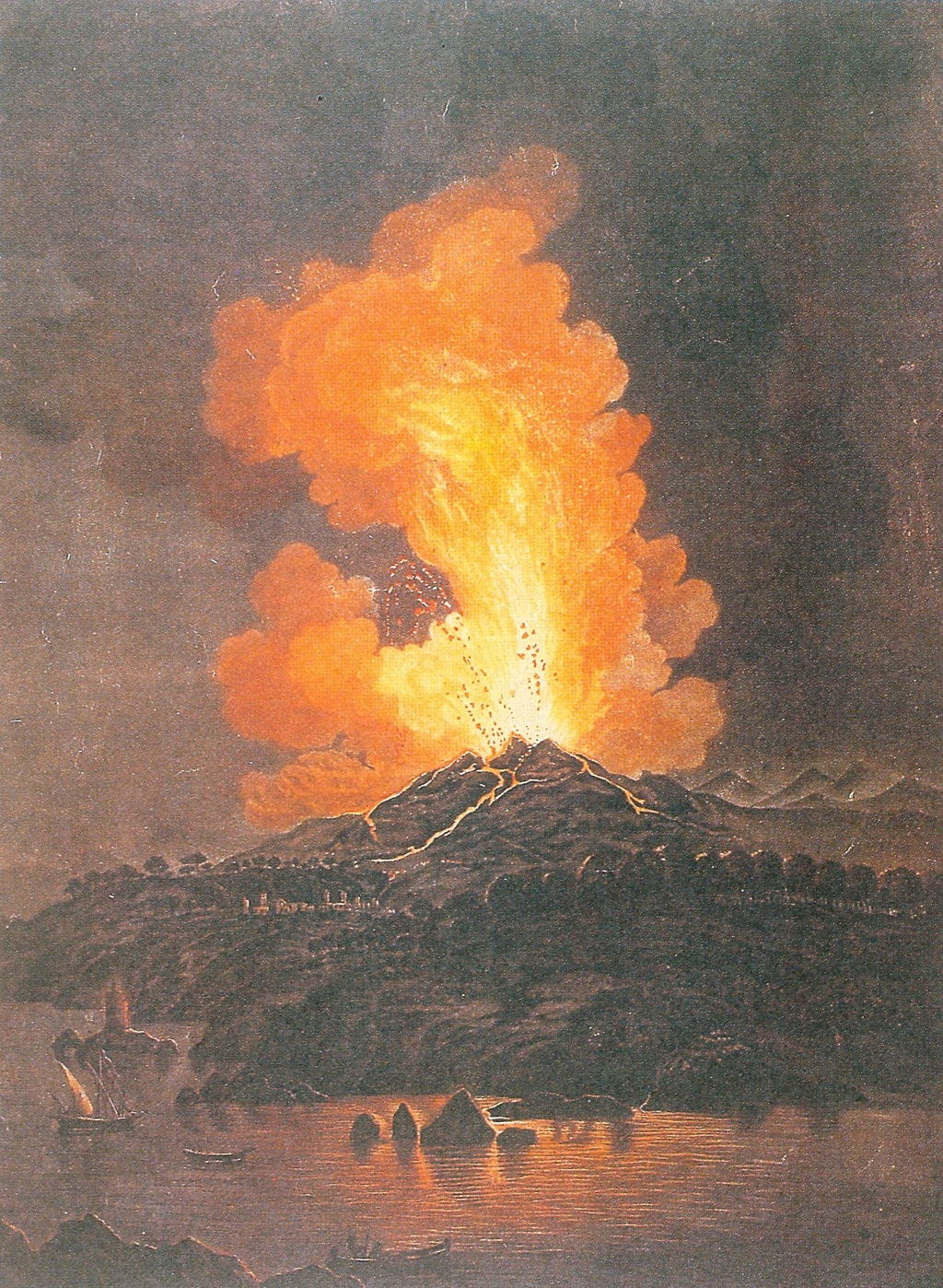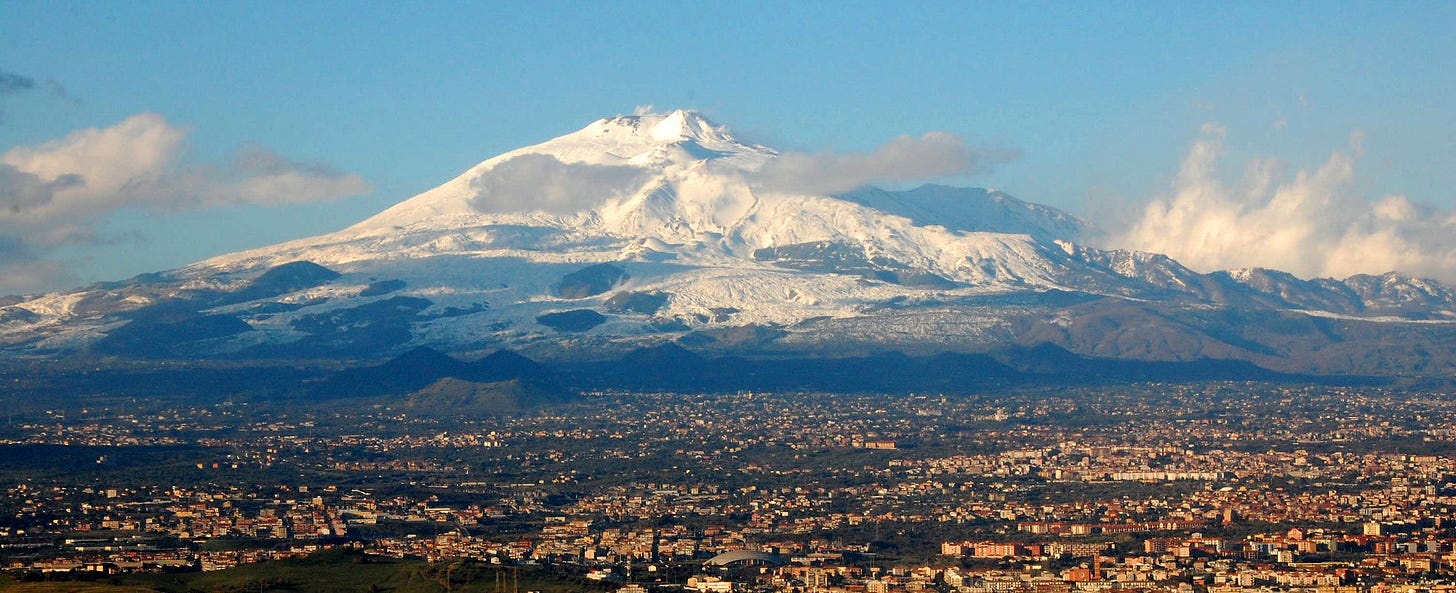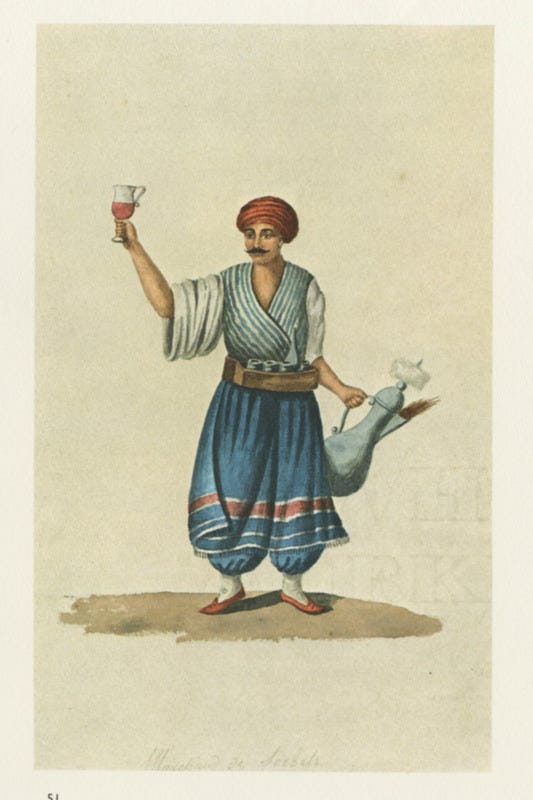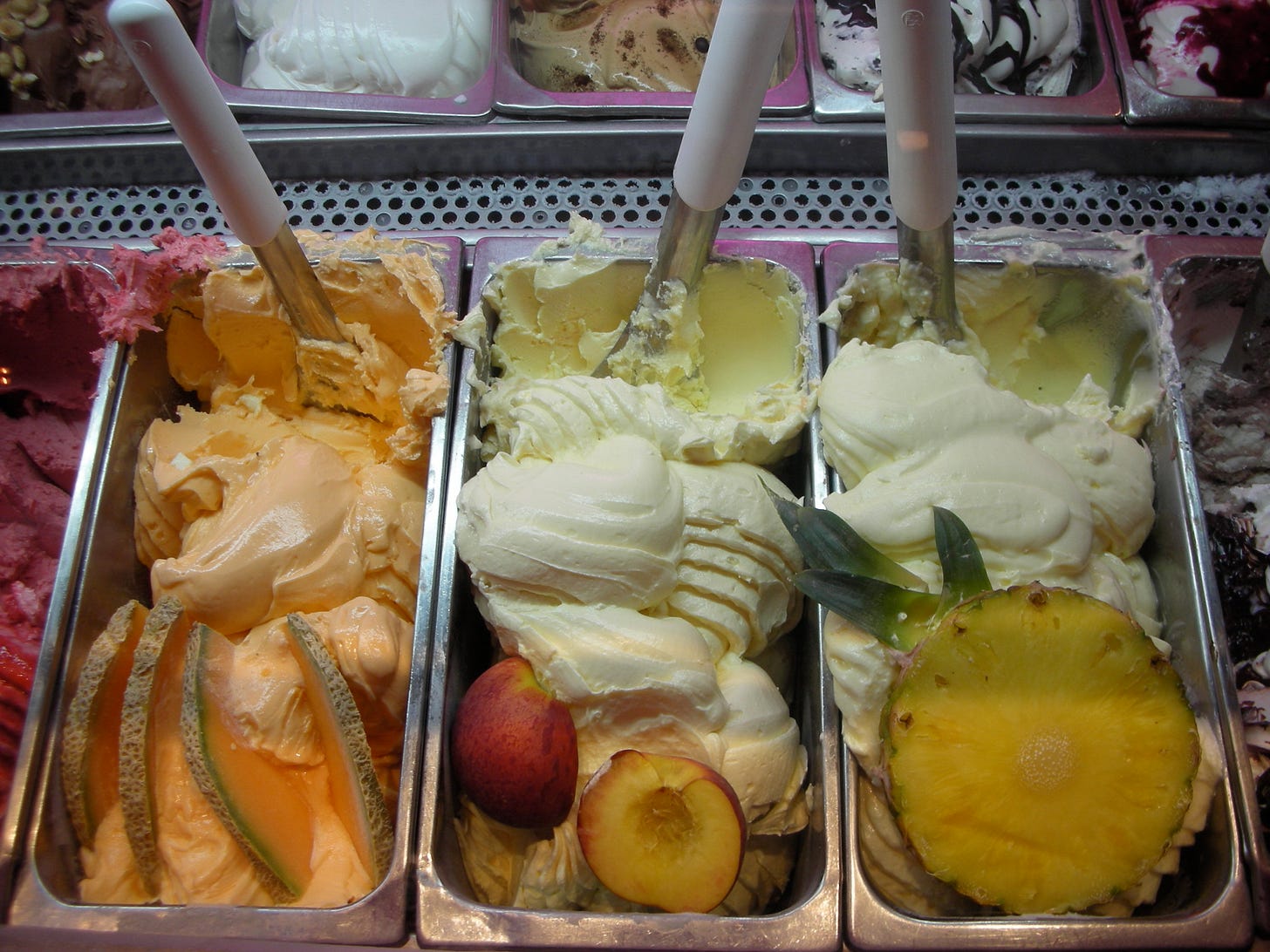I saw the headlines on Monday night: “Sicily's Mount Etna erupts in a fiery show of miles-high smoke and ash.” Like everyone, my first thought was hoping everyone nearby was safe. My second thought was about ice cream.
Besides being an active volcano, Mount Etna in Eastern Sicily is the highest mountain in the Mediterranean basin. It’s also a “shield-shaped” volcano, which means it’s wide and shallow-sloped. These two things are significant: its high altitude means it is covered in wintertime snow even in relatively warm Sicily, and its shallow, flat slope means that it accumulates a tremendous amount of snowpack.
This makes Etna an ideal reservoir for snow and ice, and it has served as the icebox of the Western Mediterranean since antiquity. The ancient Greeks and Romans harvested snow and ice from Etna, stored it in insulated ice-houses, and used it to cool their food and wine all year long.
But they weren’t the only ones who liked cold things. Far to the east of Sicily, in ancient Persia, people started putting jugs of fruit juices into fountains to cool them. Soon, they began adding sugar, and the concept of a sweet chilled drink got a Persian name, sharbat (شربت). Sharbats became popular in Persia (as they still are in Iran), and the concept spread throughout the Muslim world. Like many Persian foods including pistachios and the meatball, sharbat entered Sicilian cuisine via Arab and Turkish conquests of the island, beginning in the 8th century. By the first millennium AD, Sicilians had stepped up their sharbat game: forgetting about the fountains and instead cooling their sweet drinks with snow from the slopes of Mount Etna.
But this still wasn’t enough to invent ice cream. Pure ice and snow can cool a drink, but it can’t freeze it solid. To do that, you need to deploy the endothermic effect. In physics, an endothermic process is one that can actually absorb heat- and Sicilians eventually discovered one of these processes by mixing ice and salt together. This ice-salt solution absorbs heat and increases the ice’s ability to cool things- and makes it possible to freeze sugary liquids into a slush or a soft solid. Surrounding a jar of sweet juice or milk with ice and salt, and letting it freeze, you wind up with a tasty, solid frozen dessert. Luckily, Sicily has a great source of salt- the famous sea salt works of Trapani, on the Western side of the island. Because of this source of salt and Etna’s reserve of ice, along with a tradition of drinking sweet concoctions, the conditions were perfect for the Sicilian invention of a dizzying array of ices, slushes, and ice creams. These were called sorbetto (from sharbat), granita (referring to grains of ice), and gelato (meaning “iced” or “frozen”). It’s true: due to the existence of an immense snow-covered volcano and a salty sea, Sicily was destined to invent ice cream.
Sicily has been famous for its ices and ice creams since at least the 16th century. Visiting chefs from Spain and France brought their custards and crémes, which could be frozen just like sarbat was. This was the origin of ice cream and iced custard. Lemonade, already popular in Sicily, could be frozen into a slushy granita. Sicilian chefs used Etna’s ice and Trapani’s salt, along with the new freezing technique, to make an astounding array of frozen treats. The Sicilian innovation of icy sweets spread in every direction- and became a favorite dessert in Europe. The Sicilian Procopio Cuto was the first to serve ice cream to the French public at the Caffe Procope, one of the oldest coffeehouses in Europe. It crossed the ocean to the Americas- often carried by Sicilian immigrants- where it became a national dish.
Granita, an icy frozen slush that is the most direct descendant of sharbat, is an especially beloved part of the Sicilian summer: it’s often eaten for breakfast with bread, the brioche col tupo (brioche with a hat). Aficionados split the brioche open, load it with lemon or almond granita (or any kind, really), and devour it like a sandwich. It’s icy, juicy, buttery, cooling, and very very delicious.
Making Sicilian granita is dead simple and the perfect thing for summertime desserts or breakfasts. Here is my recipe for Granita al Limone:
Granita al Limone
1 cup fresh lemon juice
2 cups water
1 cup sugar
Mix everything together until the sugar is totally dissolved. Pour into a flat dish- I use a metal baking pan- and put in the freezer. When a layer of ice forms on the top, stir and break up the ice into small grains with a spoon. Repeat until the whole deal is flaky and grainy, the texture of snow. Serve in chilled cups or in a brioche. Garnish with lemon peel if you’re feeling extra.
The above recipe can be used to make basically any type of granita: coffee, melon, blood orange, almond milk, strawberry, etc. Myself, I love to make bright red cactus fruit granita in late summer. Just make sure you’re following the basic recipe of 3 parts liquid to one part sugar and you’ll be fine.










I’m going to try putting that recipe in my home ice cream maker to see if I get an acceptable result.
One of my favourite food groups just became tastier with this origin lesson 😀